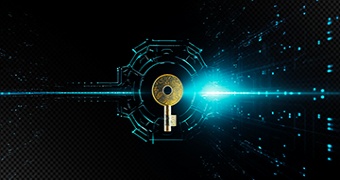We are living in a world where artificial intelligence (AI) is transforming eve....
A Comprehensive Guide: Understanding the NIS 2 Directive

In an era of ever-increasing reliance on technology and digitalization, the European Union has significantly advanced its cybersecurity framework with the introduction of the NIS 2 Directive. In this article, we will take a closer look at how it works and what kind of impact it is having on cybersecurity practices in EU countries.
Understanding the NIS 2 Directive
The NIS 2 Directive builds upon the foundational principles of the original Network and Information Security (NIS) Directive. While the NIS Directive was a step in the journey of establishing cybersecurity practices across EU member states, the NIS 2 Directive evolves this approach further.
This progression from the NIS to the NIS 2 Directive underlines the EU’s commitment to ensuring robust cybersecurity measures, enforcing stricter security protocols, and enhancing incident reporting mechanisms for critical entities.
In the following sections, we delve deeper into the NIS 2 Directive, examining its key features and assessing its overall impact.
The Objectives of the NIS 2 Directive
The NIS 2 Directive outlines the following key objectives:
- Strengthening security measures - Enhancing the overall cybersecurity posture of essential entities, including sectors like energy, transport, banking, and health.
- Harmonizing reporting obligations - Establishing uniform incident reporting requirements to improve transparency and enable a coordinated response to cyber threats.
- Expanding the scope of regulation - Covering a wider range of sectors and digital service providers, reflecting the evolving nature of cyber risks.
- Promoting national supervision and cross-border collaboration - Strengthening national supervisory measures and fostering EU-wide collaboration to effectively respond to cyber incidents.
Key Differences between the Original NIS Directive and NIS 2
The transition from the NIS Directive to the NIS 2 Directive is marked with some key differences:
| Aspect | Original NIS Directive | NIS 2 Directive |
| Scope | Focused on essential services in sectors like health, energy, transport, and finance. | Expanded to include more sectors, such as postal and courier services, public administration, and waste management. |
| Security and Reporting Requirements | Set general security and incident reporting obligations for operators of essential services and digital service providers. | Imposes more stringent security and incident reporting requirements, reflecting the need for higher standards due to advancing cyber threats. |
| Enforcement Mechanisms | Provided a baseline for member states to enforce compliance, with variations in implementation. | Introduces stronger enforcement measures, including higher fines and stricter regulatory oversight to ensure compliance. |
| Focus on Supply Chain Security | Limited emphasis on the security of supply chains and service providers. | Places greater emphasis on supply chain security, acknowledging its critical impact on cybersecurity overall. |
Expanded Scope of EU Cybersecurity Regulations
The NIS 2 Directive greatly expands EU cybersecurity rules, addressing the growing range of digital threats and the higher dependence on digital systems in many sectors. It extends beyond the original NIS Directive, which concentrated on essential services in sectors such as transportation, energy, digital infrastructures, water supply, banking, and health. NIS 2 Directive includes additional sectors, for instance, postal and courier services, waste management, public administration, digital providers, research, manufacturing, food, chemicals, etc., recognizing their growing importance in the digital ecosystem.
NIS 2 Directive also places a strong emphasis on digital service providers, such as cloud computing services, online marketplaces, and search engines. This inclusion highlights the EU's recognition of the pivotal role these services play in the digital economy.
Enhanced Cyber Incident Reporting Requirements
The NIS 2 Directive significantly tightens cyber incident reporting requirements for essential entities of critical sectors. They are now required to report significant cyber incidents swiftly and with detailed information, following specific guidelines set by the directive. This change aims to standardize incident reporting across the EU, ensuring a prompt and effective response to cyber threats.
Timely and efficient incident reporting is crucial in cybersecurity. It enables quick mitigation of incidents and helps in understanding and preventing future threats. This improved reporting process allowing for a more proactive and informed approach to managing and safeguarding digital infrastructure.
Furthermore the NIS 2 Directive promotes the reporting of significant cyber threats. Member States are encouraged to promote collaboration between entities and Cyber Security Incident Response Teams (CSIRTs), competent authorities, or designated points of contact. This collaboration ensures heightened awareness of the evolving cyber threat landscape. The goal is to facilitate effective and timely responses to significant cyber threats mandated or incentivized by sector-specific Union legal acts, thereby enhancing overall cybersecurity resilience at national and European levels.
NIS 2 Directive Compliance Challenges and Opportunities
The NIS 2 Directive introduces more rigorous compliance requirements, encompassing risk management, incident reporting, and supply chain security. While adherence demands significant resource investment, particularly for smaller entities and those in newly included sectors, it also presents substantial opportunities. Compliance not only strengthens cybersecurity resilience but also offers competitive advantages and potential operational improvements. For the cybersecurity industry, the directive opens new markets for compliance-related solutions.
| Aspect | Compliance Challenges | Compliance Opportunities |
| Requirements | Enhanced security measures, strict incident reporting, and supply chain security. | Stronger cybersecurity posture, and reduced risk of data breaches. |
| Resource Investment | Need for investments in technology and expertise, especially for smaller entities. | Drives operational efficiencies and innovation. |
| Audits and Assessments | Regular audits or ad-hoc audits carried out by an independent body. | Identifies areas for improvement, enhancing reliability and security. |
| Impact on Entities | Potential strain on resources and adaptation to new standards. | Enhanced reputation, trust, and competitive advantage. |
| Cybersecurity Industry | Adapting to evolving compliance standards and integrating them into service offerings. | Opens new markets for compliance solutions and services. |
Cybersecurity Risk Management under NIS 2
The NIS 2 Directive emphasizes the importance of cybersecurity risk management, mandating that key organizations adopt thorough practices. This includes identifying, assessing, and mitigating cyber risks, and integrating advanced security measures and regular audits.
Shifting towards a proactive cybersecurity approach extends to all organizational levels and includes enhancing security awareness among staff.
Additionally, the directive acknowledges the significance of supply chain security, reflecting the interconnectedness of modern digital infrastructures. Overall, NIS 2's emphasis on risk management is instrumental in fostering a more secure and resilient digital environment.
Article 21 mandates Member States to enforce cybersecurity risk-management measures for essential and important entities. These measures, tailored to the entity's risk exposure, size, and potential incident impact, require appropriate technical, operational, and organizational strategies aligned with industry standards and cost considerations.
The directive outlines comprehensive cybersecurity measures, covering risk analysis, incident handling, business continuity, and supply chain security. Member States must consider supplier vulnerabilities and secure development. Entities not complying must take corrective action. The Commission is tasked with adopting technical and methodological requirements for specific service providers and entities, ensuring alignment with European and international standards through consultation with the Cooperation Group and ENISA.
The Impact of the NIS 2 Directive on the EU Digital Market
The implementation of the NIS 2 Directive is poised to have a substantial impact on the EU digital market. By setting unified and strong cybersecurity standards across member states, the directive not only enhances the security of digital infrastructure but also contributes to leveling the playing field for businesses operating in the digital domain.
Moreover, the heightened cybersecurity measures can stimulate innovation within the cybersecurity sector, as companies develop new solutions to meet these comprehensive standards. However, the directive also presents challenges to entities who may face difficulties in complying with the rigorous requirements.
Nonetheless, the overall impact of the NIS 2 Directive is expected to bolster the resilience and reliability of the EU digital market, making it more secure and attractive for investment and innovation in the long term.
Preparing for NIS 2 Compliance
As the NIS 2 Directive introduces more rigorous cybersecurity requirements, organizations across the EU must gear up for compliance. This preparation involves a multifaceted approach, addressing both technical and organizational aspects of cybersecurity.
- Understanding requirements - Begin by fully understanding NIS 2 requirements and how they impact current practices. Identify compliance gaps, especially in risk management, incident reporting, and supply chain security.
- Updating cybersecurity frameworks - Revise and enhance cybersecurity frameworks to align with NIS 2 standards. This includes updating policies, adopting new security technologies, and enhancing internal controls.
- Employee training and awareness - Conduct regular training for employees to minimize risks related to human error and keep staff updated on cybersecurity best practices.
- Stakeholder engagement - Collaborate with suppliers and service providers to ensure that the those falling within the scope of the Directive should comply with its requirements.
- Regular audits and improvement - Implement a routine of regular internal and external audits for continuous assessment and improvement of cybersecurity measures.
- Expert consultation - Consider seeking advice from cybersecurity experts or legal advisors specializing in EU regulations for nuanced guidance on compliance.
PECB’s NIS 2 Directive Lead Implementer Training Course
In line with the latest developments in EU cybersecurity regulations, PECB proudly introduced the NIS 2 Directive Lead Implementer Training Course. This specialized training course is meticulously designed to provide professionals with a thorough understanding of the NIS 2 Directive, focusing on effective implementation and management of its compliance requirements.
The course delves into critical aspects of cybersecurity risk management, offering pragmatic strategies to strengthen organizational cybersecurity frameworks in accordance with EU standards. Ideal for both emerging and experienced professionals, this training is an invaluable resource for those seeking to navigate the complexities of NIS 2 compliance confidently.
In conclusion, the NIS 2 Directive marks a significant evolution in the EU’s approach to cybersecurity, addressing contemporary challenges with its expanded scope, stringent compliance requirements, and emphasis on robust risk management. As organizations adapt to these changes, the PECB NIS 2 Directive Lead Implementer Training Course emerges as a pivotal resource for professionals aiming to navigate this new landscape. Embracing the NIS 2 Directive requirements not only ensures compliance but also fortifies the overall cybersecurity resilience of the EU, ultimately contributing to a safer digital environment for all.
About the Author
Vlerë Hyseni is the Digital Content Officer at PECB. She is in charge of doing research, creating, and developing digital content for a variety of industries. If you have any questions, please do not hesitate to contact her at: content@pecb.com.


